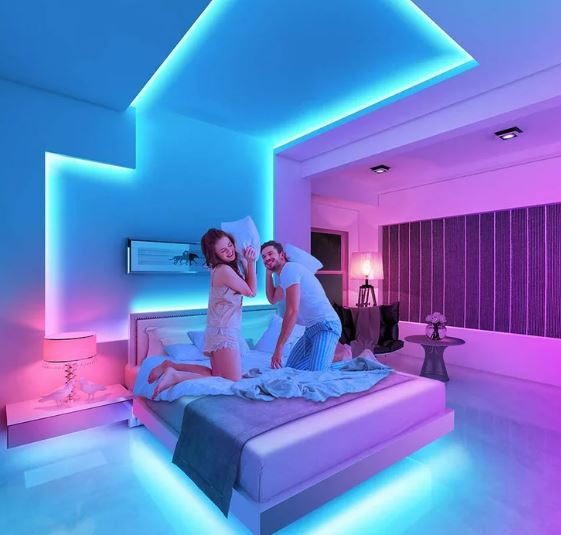LED or light emitting diode lighting is becoming increasingly popular for use in homes and residential buildings. LEDs offer several advantages over traditional incandescent and compact fluorescent bulb lighting solutions. They are much more energy efficient, using around 75% less energy than incandescent bulbs to produce the same amount of light. This results in considerable energy cost savings over the lifetime of the product.
LED lights also have an extremely long lifespan, lasting around 25 times longer than incandescent bulbs. On average, an LED bulb will continue glowing for around 25,000-50,000 hours before needing replacement. This works out to around 20-30 years of use if the light is on for 3 hours per day. In comparison, incandescent bulbs typically last 1,000-2,000 hours, which is around a year of regular use.
LED bulbs also don't contain mercury like compact fluorescent lamps (CFLs). Mercury is a toxic material that needs to be disposed of carefully at the end of a CFL's life. With LEDs, there are no hazardous materials to worry about during replacement or disposal.
In addition to energy savings and longevity, LED lights offer a far greater variety of lighting options compared to older technologies. They come in different colors, brightness levels, beam angles and form factors. Homeowners can create unique and tailored lighting designs using various LED products.

Understanding LED Terminology
When shopping for LED bulbs and fixtures, there are a few key terms homeowners need to be familiar with regarding brightness, light appearance and color rendition:
-
Lumens – A measure of total light output from the source, similar to wattage for incandescent bulbs. Pay attention to lumen ratings when comparing brightness between products.
-
Correlated Color Temperature (CCT) – Measured in Kelvin (K), this indicates the color appearance from warm/yellow (2700K) to cool/blueish (5000K+). Choosing the right CCT depends on personal preference and application.
-
Color Rendering Index (CRI) – Rates how accurately a light source renders colors of objects, on a scale of 0-100. Higher is better, with 80+ considered good for most uses and 90+ recommended for tasks requiring accurate color assessment.
Knowing these terms will help select the right LED solution for different lighting needs in a home.
LEDs for Ambient, Task and Accent Lighting
When setting up lighting in a home, it's best to consider multiple layers of lighting serving distinct purposes:
Ambient Lighting
Provides general illumination throughout an area. Recessed downlights or track lighting mounted in the ceiling work well. For a warm, cozy feel in living areas, choose bulbs with a CCT of 2700-3000K. Neutral or cooler 3000-4000K light can lift lighter interior designs.
Task Lighting
Focuses on work surfaces like kitchen counters or desks. Under-cabinet lights, table lamps or standing fixtures with a higher lumen output and CRI of 90+ work for this. 4000-5000K neutral white is best for contrast.
Accent Lighting
Highlights specific objects, art or architectural features. Spotlights, low-voltage track heads or clip-on lamps allow accenting different areas. Built-in wallwashers or graduated recessed lights also work.
Proper lighting design using a mix of these types tailored to spaces creates visual balance and user comfort. Play with various color temperatures, lumen levels and fixture placements to suit home interiors and activities within.
Choosing LED Products
When shopping for LED residential lighting fixtures and bulbs, look for the following features:
-
Dimming Capability – Not all LEDs dim smoothly, so check product specs and use compatible dimmer switches. This allows adjusting light levels.
-
Long Warranty – Quality fixtures will offer warranties of 5 years or more to cover manufacturing defects.
-
Safety Ratings – Look for UL or ETL certification showing the product has passed electrical safety testing standards.
-
Efficacy – Consider lumens per watt to compare energy efficiency between options. Higher values are better.
-
Compatible Color Temperatures – Use the same or similar CCTs within each space for uniform lighting appearance.
-
Easy Installation – Many LED bulbs are as simple as screwing into existing sockets. Fixtures may need electrician installation depending on wiring involved.
Following these purchasing tips helps get long-lasting, high-performing LED lights tailored to residential needs and design. Proper selection makes for enjoyable years of use while saving on energy costs compared to legacy lighting.
LED Considerations for Specific Home Areas
When setting up LED lighting, also consider the particular needs of different interior areas:
Kitchens – Besides bright overhead lighting for workspace rated at 4000-5000K CCT, add under-cabinet task lighting with high CRI 90+. Accent lighting on display shelves uses a warmer temperature.
Living Rooms – Aim for ambient 2700-3000K lighting throughout for warmth and comfort. Employ accent lights at entryways, on art pieces and houseplants for visual interest.
Bathrooms – Main overhead vanity lighting at a cooler 4000-5000K illuminates well for grooming tasks. Supplement with dimmable lighting like a wall sconce at 2700K for a relaxing atmosphere.
Bedrooms – Choose 2700K bulbs or lower for a calm, restful light that doesn't disrupt sleep. Lamps provide adjustable task lighting without brightening the whole room.
Outdoors – Rated for wet locations, use LED landscape lights at a variety of color temperatures to delineate walkways and wash exterior walls. Floodlights add security at entrances.
By picking lights suited to each specific area's purpose and stylistic tone, homeowners optimize function and ambiance with LED illumination throughout living spaces. Proper selection guarantees enjoying technology advancements for years to come.
